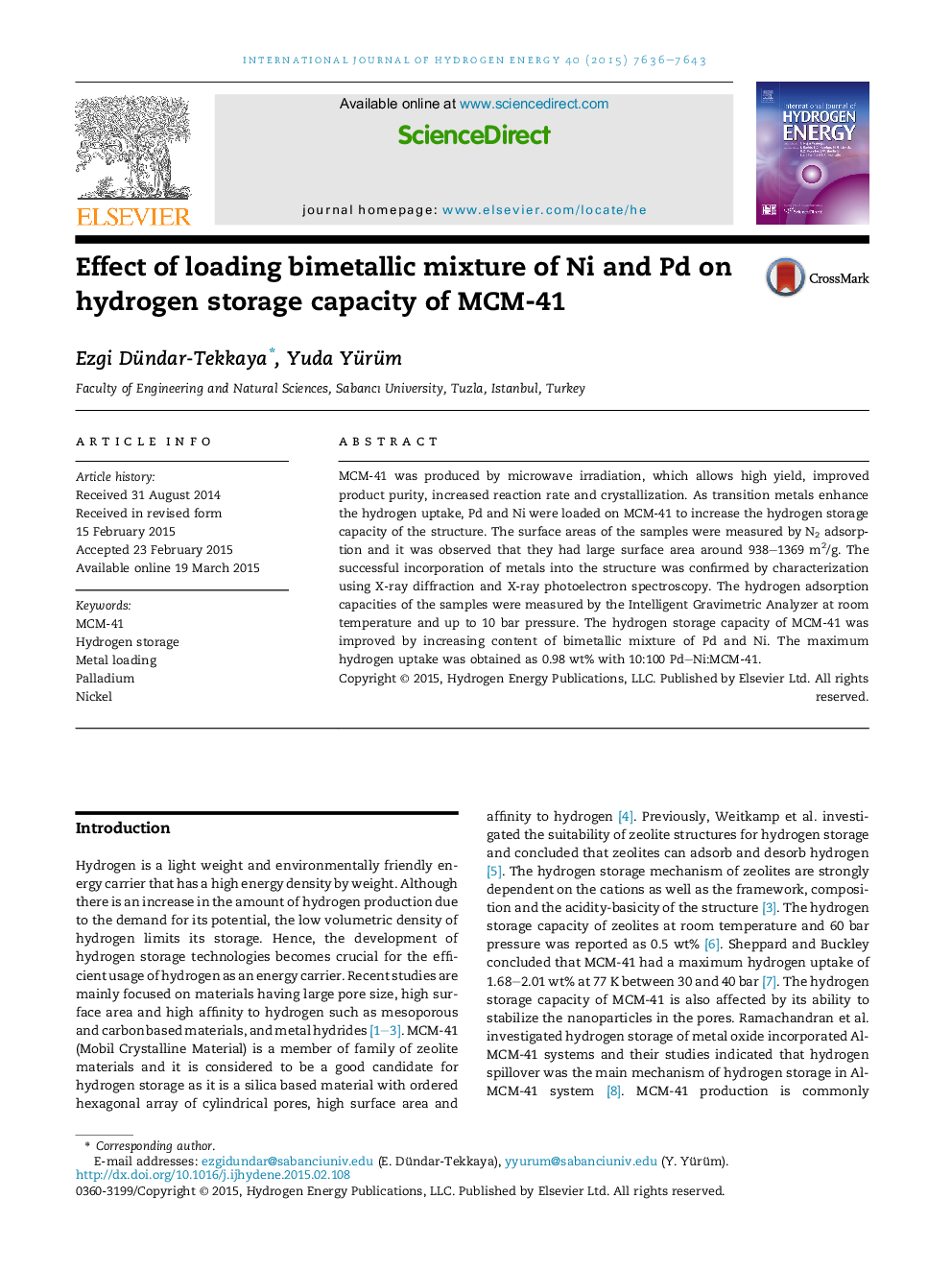| Article ID | Journal | Published Year | Pages | File Type |
|---|---|---|---|---|
| 1279738 | International Journal of Hydrogen Energy | 2015 | 8 Pages |
•Pd–Ni loaded mesoporous MCM-41 was successfully synthesized by microwave irradiation.•MCM-41s had good thermal stability, high surface area and uniform pore structure.•The hydrogen uptakes of the samples were strongly affected by the increasing weight ratio of the metal in the structure.•At room temperature the maximum hydrogen uptake was measured as 0.98 wt%.
MCM-41 was produced by microwave irradiation, which allows high yield, improved product purity, increased reaction rate and crystallization. As transition metals enhance the hydrogen uptake, Pd and Ni were loaded on MCM-41 to increase the hydrogen storage capacity of the structure. The surface areas of the samples were measured by N2 adsorption and it was observed that they had large surface area around 938–1369 m2/g. The successful incorporation of metals into the structure was confirmed by characterization using X-ray diffraction and X-ray photoelectron spectroscopy. The hydrogen adsorption capacities of the samples were measured by the Intelligent Gravimetric Analyzer at room temperature and up to 10 bar pressure. The hydrogen storage capacity of MCM-41 was improved by increasing content of bimetallic mixture of Pd and Ni. The maximum hydrogen uptake was obtained as 0.98 wt% with 10:100 Pd–Ni:MCM-41.
